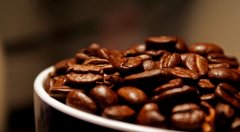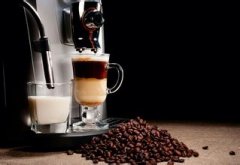Barker Coffee Shop landed in Hong Kong

"there is a nearby store". Once upon a time, the slogan of the 7-11 convenience store in Hong Kong can now be used to describe Starbucks. When it landed in Hong Kong in May 2000, the first Starbucks coffee shop was located in Exchange Square in Central. In May 2008, back in Central, the 100th Hong Kong store opened on Hollywood Road. Starbucks is definitely more than just a coffee shop. From a Seattle retail store selling coffee beans and spices in 1971 to moving into the beverage market (coffee retail) in the 1980s, by the 1990s, expanding at an alarming rate around the world (despite shrinking and laying off staff this year due to the US economic downturn), the "Starbucks phenomenon" must be one of the most interesting cultural topics in globalization.
Perhaps like the mermaid monster Siren (from Greek mythology) in its Logo, many scholars still wonder why Starbucks can instantly turn the United States into a "caffeine country" (caffeinated nation) and capture people around the world. Perhaps because of this, after so many years, there is still not a book analyzing Starbucks' cultural phenomenon. Of course, I am not talking about business books such as the Legend of Starbucks Coffee Kingdom or Starbucks Model written by the president of Starbucks, or personal motivational stories like "Starbucks saved my Life", but critical books that examine the multiple cultural meanings of Starbucks. Recently there is one: Taylor Clark's Starbucked A Double Tall Tale of Caffeine Commerce & Culture paperback, which is worth reading.
Starbucks does have multiple faces. Coffee chain, coffee chief brand, "third space" between home and office, music distribution and retail stations (more recently, movies), ubiquitous cityscape, symbol of city gentrification, companies that can expand rapidly without advertising, and, become the symbol of cultural colonization in the eyes of some people, and so on. All these are discussed in Starbucked. The book is divided into two parts. The first part examines Starbucks culture and tries to solve some Starbucks mysteries, such as why Seattle has become a coffee center, how Starbucks has few competitors, etc. (interesting is that Hong Kong has Pacific Coffee rivalry; the author should come to Hong Kong to see) The second part focuses on the ethical issues surrounding Starbucks in recent years, such as its contradiction with fair trade, the elimination of living space for small independent coffee shops, and so on. The book quotes many interesting true stories, such as a Southern Baptist priest in Florida who was seduced with Starbucks $10 gift vouchers during Easter worship in 2006. As a result, the number of believers doubled than usual. More interestingly, in 1998, two University of Massachusetts Boston researchers conducted a chemical analysis in Boston Harbor and found surprisingly that the sea water contained caffeine. Does Starbucks drive to the ocean? No, it turns out that it comes from human discharge. when people drink coffee, they absorb 95 bar cents of caffeine, and the rest is discharged and returned to the ocean through waste pipelines. as a result, rivers, lakes, bays and even treated drinking water in the United States may contain caffeine. This phenomenon has a title in the United States, called the "Starbucks effect".
Maybe Hong Kong should also test the composition of sea water. When Starbucks came to Hong Kong, its unified decoration store (also in green and bronze shades) has become a ubiquitous cityscape. Liu Xiliang said in the Dream of Port Nuren that tea restaurants represent the general cultural form of Hong Kong. however, in recent years, I have seen many tea restaurants close down because they can't stand the unreasonable high rent. The "big encirclement" tea restaurant, which offers everything, has been replaced by Starbucks, which only sells coffee, milk and muffins. To some extent, tea restaurants and Starbucks can be seen as a struggle between local and global. Dutch architect Koolhaas proposed "Generic City" in 1995, that is, the expansion of metropolises makes cities look more and more similar and less identifiable. He especially uses airports and hotels to explain that Starbucks must be added now. However, the popularity of Starbucks is also seen as an urban environment for the emergence of the creative class in advanced countries, so it is also wrong to say that Starbucks only sells coffee, milk and muffins. It sells culture, taste and lifestyle, where you can surf the Internet wirelessly, without the "besieged" (TV screen) of a tea restaurant, but with its melodious "Hear Music" (in recent years, it has cooperated with Apple computer to join iTunes for download). Some kind of recycled paper towels and paper cups are used, and you are given daily golden sentences on the paper cups, so it is not surprising that Starbucks drives to the cultural centre of Tsim Sha Tsui and to the University of Hong Kong. It is said that there is such a jingle in the mainland: "Primary school students eat McDonald's, middle school students go to Pizza Hut, and college students go to Starbucks."
Important Notice :
前街咖啡 FrontStreet Coffee has moved to new addredd:
FrontStreet Coffee Address: 315,Donghua East Road,GuangZhou
Tel:020 38364473
- Prev

Common sense of Italian Coffee Vienna Coffee returns to Austria
In 1805, Napoleon led his army into Vienna and occupied the summer palace of the Austrian emperor, the Fountain Palace. He not only slept in Queen Terezia's big bed for a year, but also forcibly married the Austrian princess. During the French occupation, when the Austrians had nowhere to vent their anger, some Viennese cafe owners asked the running hall to put on Napoleon uniforms to serve the guests, which was regarded as a kind of AQ resistance. War
- Next

British people who fall in love with coffee
A touch of English coffee is becoming more and more popular in Britain. The first British Coffee week (UK Coffee Week) kicked off in London this week. With the strong aroma of coffee beans and the sunshine of British spring, coffee lovers can enjoy the comfort and joy of coffee. Walking in the streets of London, the smell of freshly ground coffee is filled with beans.
Related
- Beginners will see the "Coffee pull flower" guide!
- What is the difference between ice blog purified milk and ordinary milk coffee?
- Why is the Philippines the largest producer of crops in Liberia?
- For coffee extraction, should the fine powder be retained?
- How does extracted espresso fill pressed powder? How much strength does it take to press the powder?
- How to make jasmine cold extract coffee? Is the jasmine + latte good?
- Will this little toy really make the coffee taste better? How does Lily Drip affect coffee extraction?
- Will the action of slapping the filter cup also affect coffee extraction?
- What's the difference between powder-to-water ratio and powder-to-liquid ratio?
- What is the Ethiopian local species? What does it have to do with Heirloom native species?

